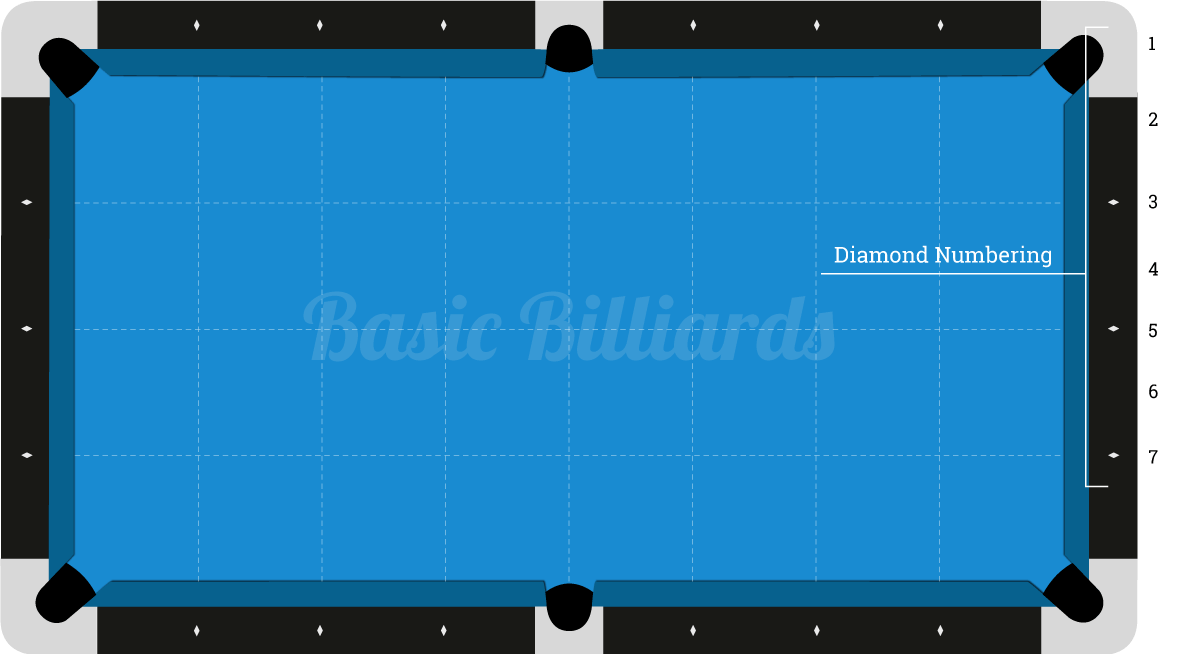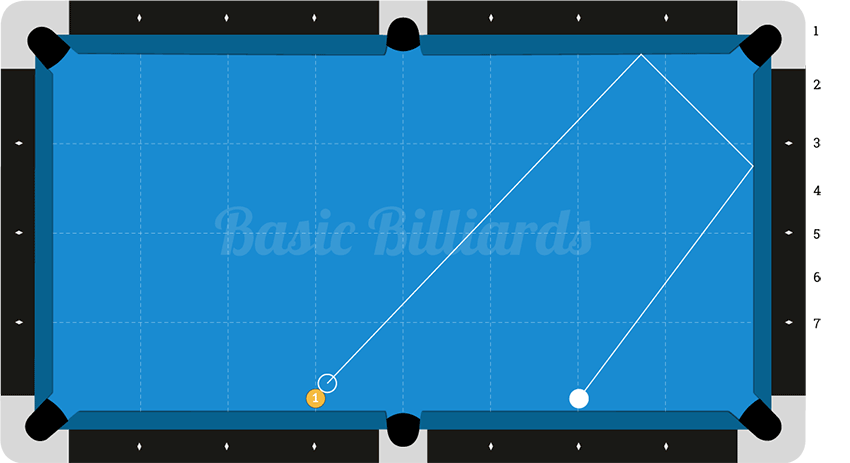Occasionally during games, the cue ball will end up safe in a place that doesn’t allow for a one rail kick so a two rail kick is the only option. Even though two rail kicks are sometimes more difficult, with the right tools a two rail kick can be as easy as a one rail kick. A system that works great for two rail kicks out of the short rail is the two plus kicking system.
The two plus system uses the diamonds on the table as markers where each diamond has a numerical value to it. With simple subtraction you can take the numbers from the diamonds to find the exact spot on the table you need to kick at to hit your target.
Here’s the set up of how to visualize the numbers on the table. The diamonds on the short rail are numbered 1 through 7 increasing by one for every half diamond. In the example below, you can see how you would number the rails in your head when using this system.

Once you’ve mentally mapped the numbers on the short rail simply measure how many diamonds away the object ball is from the cue ball on the long rail and aim for the number on the short rail that equals that number. For example, if the cue ball is on the second diamond on the long rail and the object ball is on the 5th diamond on the long rail the two balls are 3 diamonds away from each other. This means you should aim for the spot on the short rail that equals 3.

One important factor to keep in mind for this system is that it requires the use of running English. Running English is English that helps the cue ball speed up as it hits the rails. It’s the opposite of reverse English which slows the cue balls down. Even though the cue ball picks up running English on every shot through friction with the table, you should use about one tip of follow and one tip of side English to use this system. These aren’t exact rules, since several factors influence how much spin you need to use to stay on course such as your stroke and the way the table plays.
The other factor to keep in mind is the lower the number on the short rail the more your running English you need to use because the cue ball tends to slide at such steep angles so you need add a little more side English to keep the cue ball on course.
Despite the apparent variability of this system, it is very easy to use once you get the hang of it. After a few minutes of practice and calibration you’ll be able to consistently hit the targets on the rails the way you want to. After you use this system enough you’ll even be able to see the angles on the table without needing to calculate the numbers. And the sooner you can do that, the sooner you’ll be able to “feel” the angle on the table and adjust for the amount of speed and angle that are needed for that shot on any table.
